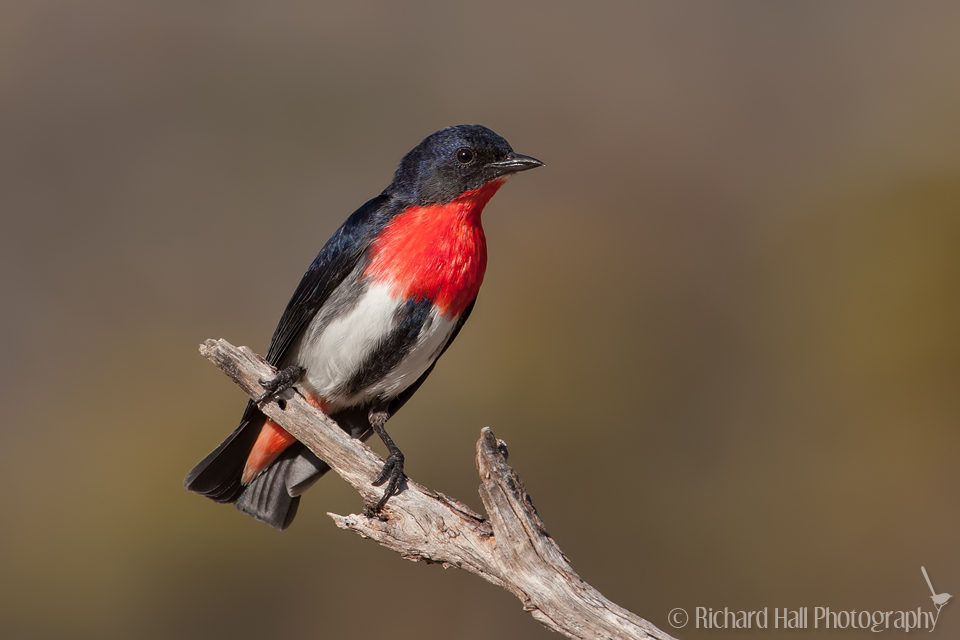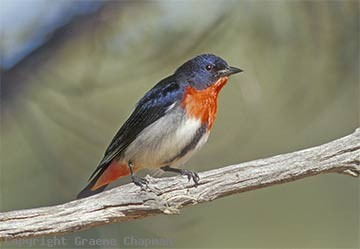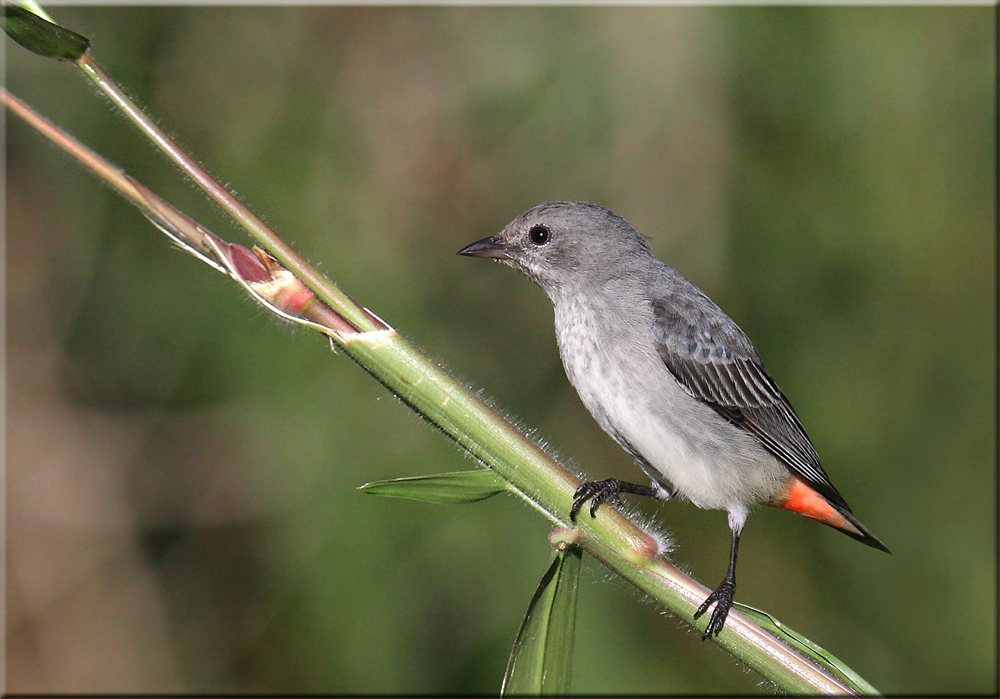
Dicaeum hirundinaceum
TAXONOMY
Motacilla hirundinaceum Shaw and Nodder, 1792, New Holland
(Australia). Four subspecies.
OTHER COMMON NAMES
English: Australian flowerpecker, Australian flower swallow,
mistletoe flowerpecker; French: Dicйe hirondelle; German:
Rotsteiss-Mistelfresser; Spanish: Pica Flor del Muйrdago.
PHYSICAL CHARACTERISTICS
3.7–4.3 in (9.5–11 cm); 0.28–0.35 oz (8–10 g). Blue-black upperparts
with red throat, breast, and vents. White belly with
black patch.
DISTRIBUTION
D. h. fulgidum: Tanimbar Islands; D. h. hirundinaceum: Australia
(except Tasmania); D. h. ignicolle: Aru Island; D. h.
keiense: Kai, Tayundu, and Watubele.
HABITAT
Forests, woodlands, savanna, scrub, and mangroves.
BEHAVIOR
Utters characteristic two- or three-note calls, various flight
notes, and song; is also a remarkable vocal mimic of many
other birds. Keeps upright on perch. Restless, fast flier that is
nomadic in search of fruiting mistletoes. When searching for
food, tends to flick its wings, moving rapidly among upper
branches of trees; also hawks for insects.
FEEDING ECOLOGY AND DIET
Heavily dependent on mistletoes; also feeds on insects, spiders,
fruits, nectar, and pollen.
REPRODUCTIVE BIOLOGY
Maintains territories by chasing intruders and singing from
high perches. Courtship involves male chasing female in flight,
landing next to her, and fanning tail. Three or four white
eggs are laid in purse-shaped nest with slit entrance at the side.
Female alone incubates for 12 days; both sexes then feed young
in nest for two weeks. Breeding season tied to fruiting period
of mistletoes, September–April.
CONSERVATION STATUS
Not threatened.
SIGNIFICANCE TO HUMANS
Spreads mistletoes.
Photo Gallery of - Mistletoebird




 Animalia Life
Animalia Life